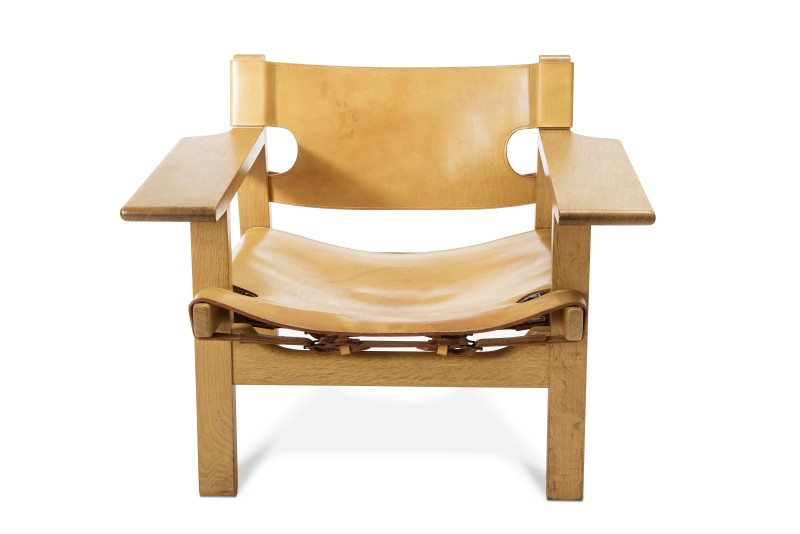Børge Mogensen wurde auf einer Reise durch Spanien im Jahr 1958 von traditionellen spanischen Sesseln inspiriert. Die Sitzfläche und die Rückenlehne seines "Spanish Chairs" sind dank der massiven Messingschnallen verstellbar. Ein Beistelltisch erübrigt sich, denn die Armauflagen sind so breit, dass auch noch Platz für ein Getränk oder Buch ist. Das rein pflanzlich gegerbte Sattelleder ist naturbelassen. Die rustikalen und natürlichen Materialien entwickeln mit der Zeit eine schöne Patina.
Schenkung aus der Slg. Petra Verberne, Niederlande, 2016
2016.1435
en

